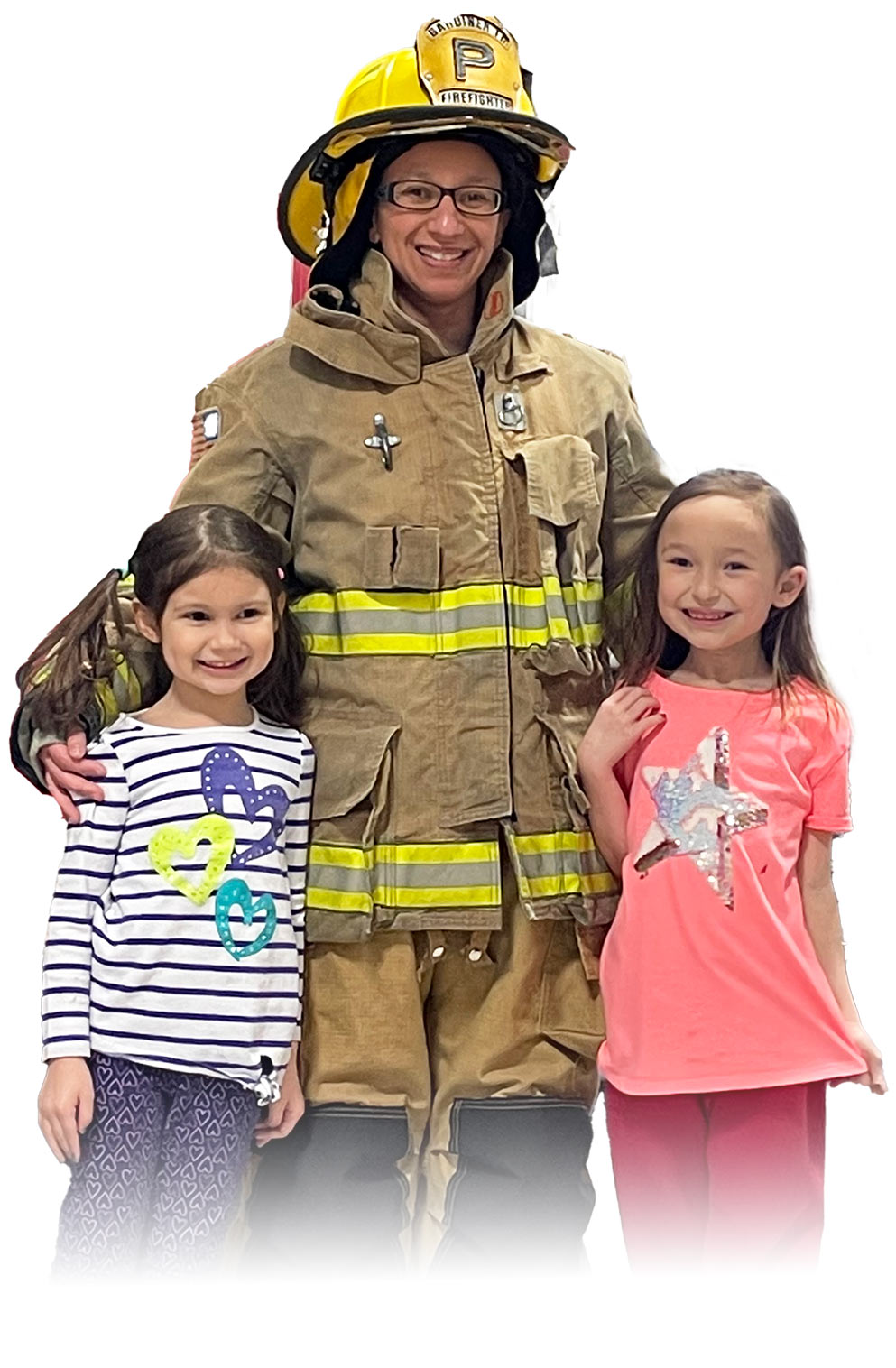5 Questions for…Sara Wadsworth

Wallkill Teachers Association
You teach sixth-grade math and English, but you’re also a mom, EMT and volunteer firefighter. How do you wear so many hats?
Whenever I’m asked how I do it all, I always jokingly say, “badly.” I suppose the real answer is with a lot of support and by figuring out one role before adding another.
Of all these roles, teaching is where I’m most comfortable. I’ve been teaching since 2007, but I’ve wanted to be a teacher since the seventh grade. There are always challenges in education, but I have a strong team of colleagues I can lean on to get me through it.
In 2021, my husband and I started off in the Wallkill Volunteer Ambulance Corps. After we moved to a district where firefighting and EMS was combined (Gardiner Fire and Rescue), we decided to branch out in that direction, too. My 6- and 8-year-olds have become accustomed to the pager going off and either me or my husband dashing off to the station on our designated night. They know it’s not every night and that people out there really need help sometimes.
Why did you choose to become a firefighter?
I always wanted to be a firefighter as a teen, but I suppose I thought as a small (just under 5 feet tall) girl, I wouldn’t meet expectations or requirements. That was silly. My only regret is that I didn’t do it sooner.

How did you get into the field?
I began as a helper in Emergency Medical Services in 2021. Watching the EMTs taking care of members in the community was so inspiring. I wanted to be part of that. In 2022, I took a semester-long EMT course and got certified that July. I now dedicate my Thursday nights (6 p.m.–12 a.m.) to my agency as an EMT. I hang out at home in uniform and if the pager goes off, I dash out the door to the station two minutes away. Each call can take 2–3 hours to clear, so when I run out the door, I don’t plan on being home for a while. To prepare for this, I make sure that I have fulfilled all pressing obligations before my shift starts.
You had an interesting summer. How was firefighter boot camp?
I wanted to be of better service to my department so I decided to accelerate my learning. Firefighter 1 classes are offered throughout the school year in semester-long classes, but that is hard for me to do with my home/work schedule. I opted to take the summer FF1 boot camp — 6 a.m.–5 p.m. Monday through Saturday for two and a half weeks.
Not to scare anyone off, but the summer boot camp was hot, sweaty, tiring and sometimes scary.
During most of the month of July, I had to wear about 40 pounds of turnout gear (boots, pants, protective hood, jacket, helmet and gloves). As an interior firefighter, you also have to throw on an air pack, SCBA (self-contained breathing apparatus) mask and any tools. All combined, it could be 70 extra pounds of gear. And then you’re expected to pull a 150-200-foot hose full of water up and down stairs toward a fire. If you’re inside a burning building filled with smoke, add the fact that you can’t see and you may have to crawl through small spaces.
The FF1 boot camp was hard, fast-paced, and they pushed you beyond what you thought you could do. In the end, this class allowed me to become a state and nationally certified exterior and interior firefighter.
How do you apply the skills from firefighting to teaching and vice versa?
FF1 is not all blood, sweat and tears. There is also a lecture portion, reading, quizzes and tests. Being a teacher helps you become a better student. I also think that assessing students helped me to assess the strengths and weaknesses of my team and strategize the jobs we each should have.
Being a firefighter helps me as a teacher because I know that if I can make it through FF1, I can make it through pretty much anything. I had to push through fears and problem solve on my feet. I think being a firefighter emboldens you to do what you have to do, say what you have to say, and not give up in the face of a challenge.